Blackbirds and Allies Info
1/25
There's no tags or description
Looks like no tags are added yet.
Name | Mastery | Learn | Test | Matching | Spaced |
|---|
No study sessions yet.
26 Terms
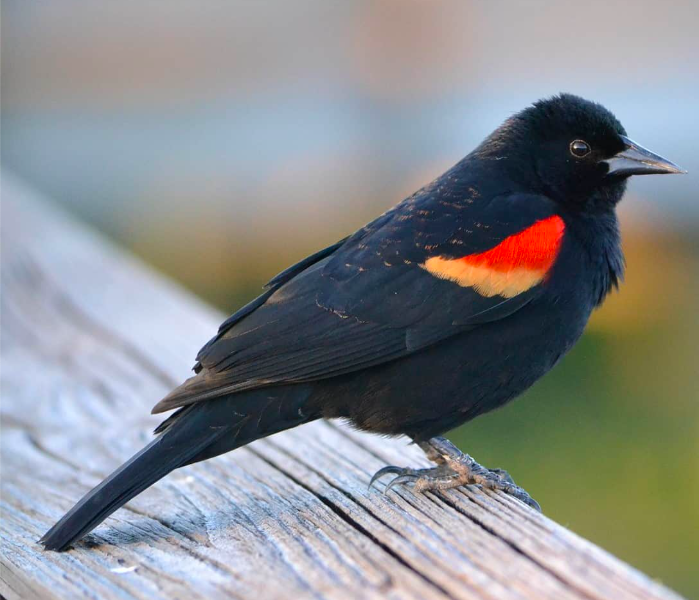
Red-winged Blackbird
can hide or expose bright spots on their wings depending on the situation (sneaking around vs defending their territory)
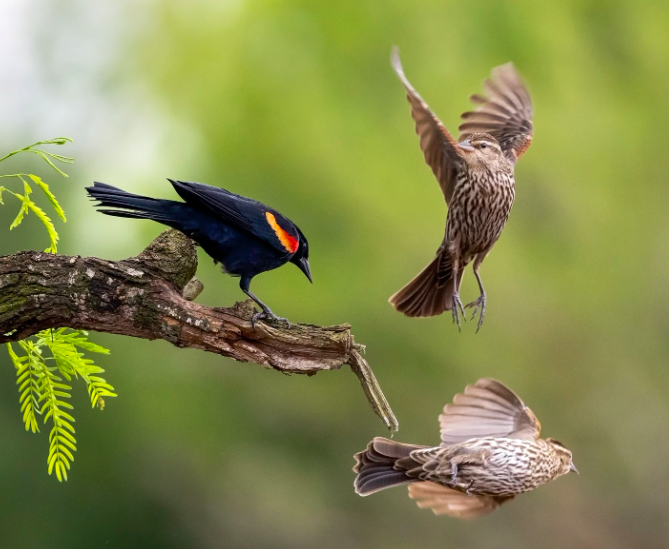
Red-winged Blackbird
marsh bird who attracts multiple females to his territory
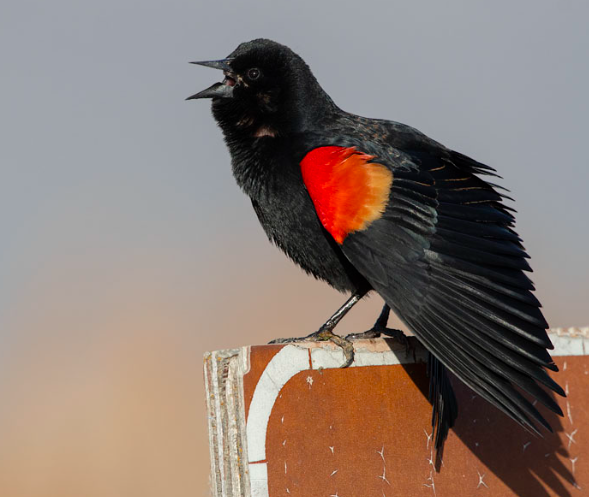
Red-winged Blackbird
attract females with their large territory size, resources, vocalizations, and postures
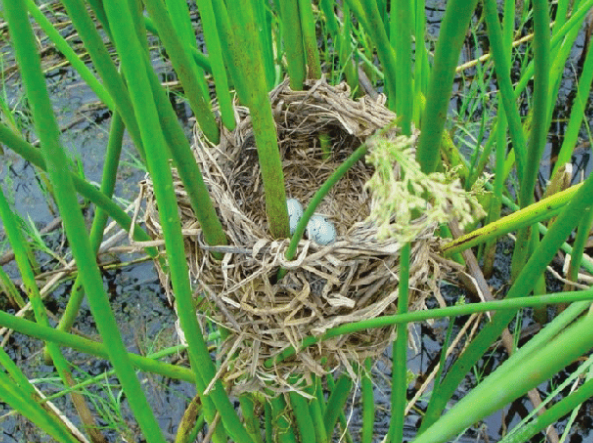
Red-winged Blackbird
nests are made of cattails or other marsh vegetation
nest is a woven basket above water level
female incubate eggs
male defends the nest

Red-winged Blackbird
Problem:
marsh habitat loss
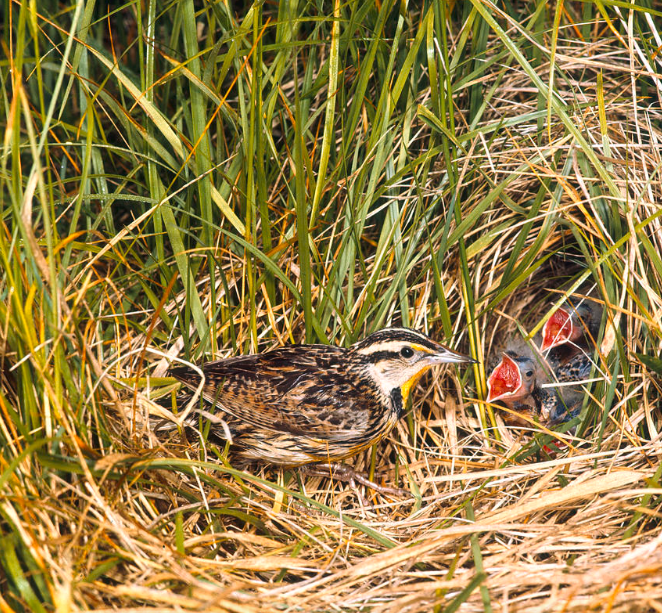
Eastern Meadowlark
ground nesters in open pastures and meadows
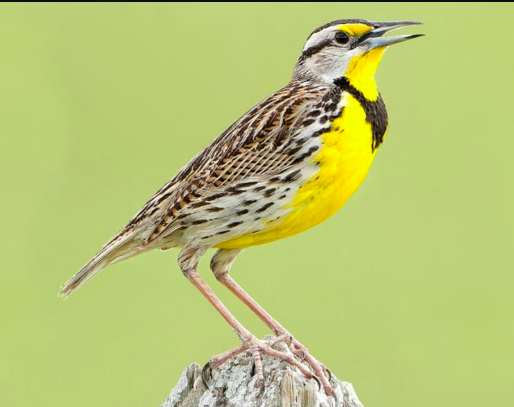
Eastern Meadowlark
males call and display from fence posts
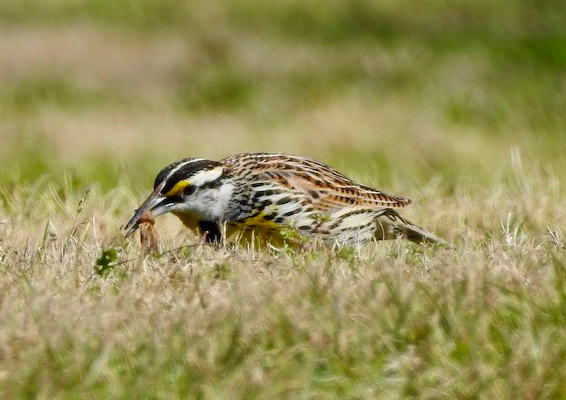
Eastern Meadowlark
omnivorous, eats mostly insects like grasshoppers, caterpillars, grubs, etc., but also weed seeds, spilled corn, and wild fruits
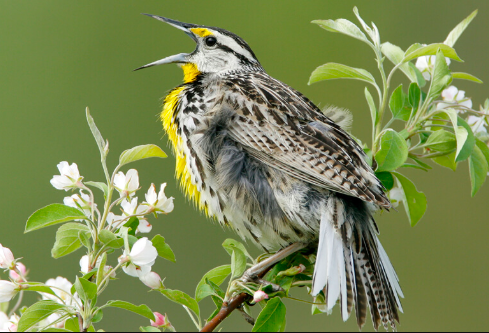
Eastern Meadowlark
males display their chest to other males to claim territory and to females for courting

Eastern Meadowlark
hearing their song means “spring is here!”
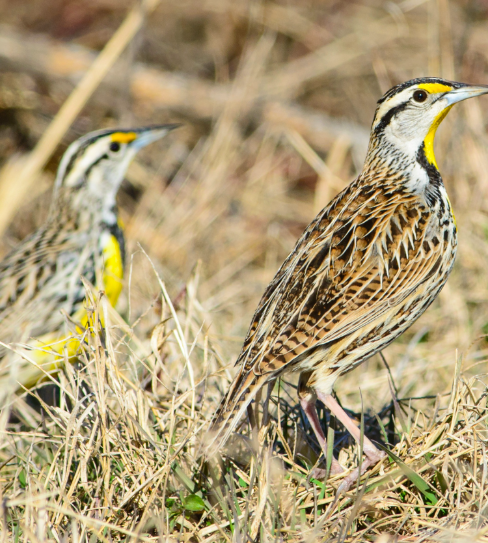
Eastern Meadowlark
polygynous
males typically have 2 mates at a time
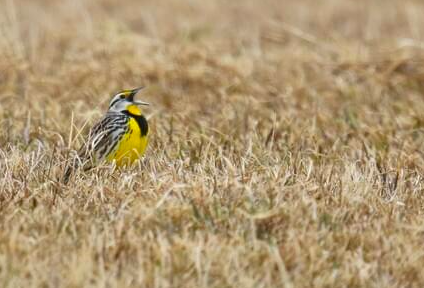
Eastern Meadowlark
Problem:
Prairie and grasslands are declining in the eastern U.S.
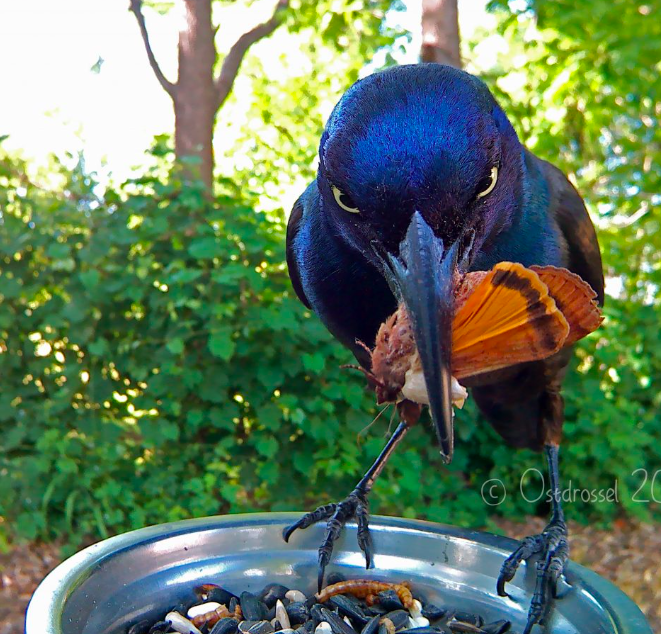
Common Grackle
mostly seed eaters, particularly corn and rice
common at suburban feeders
eat beetles, caterpillars, crustaceans, spiders, amphibians, other birds, and mice in summer
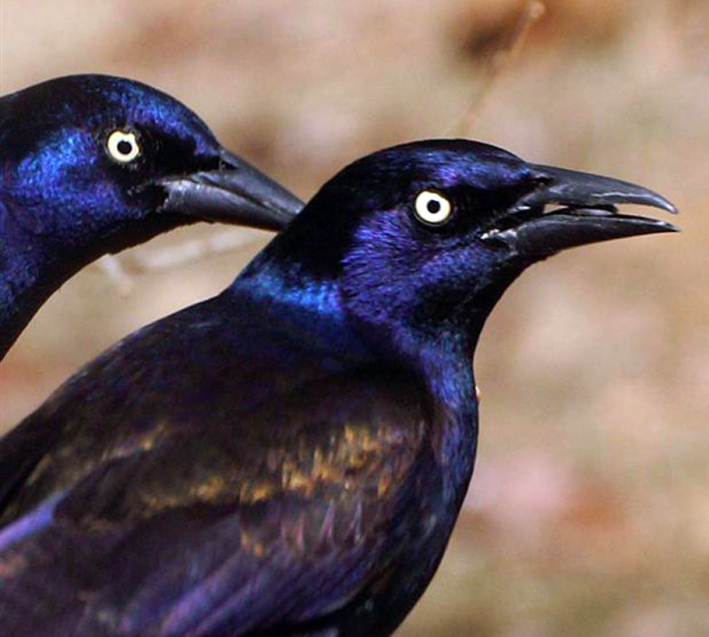
Common Grackle
keel on upper mandible to saw open acorns
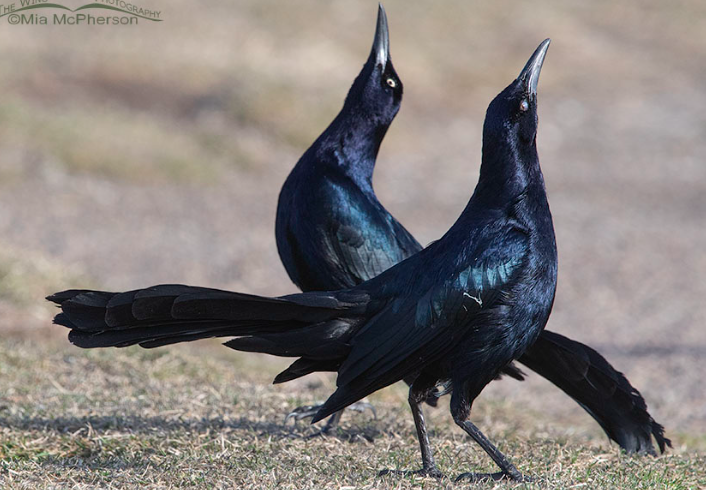
Common Grackle
monogamous
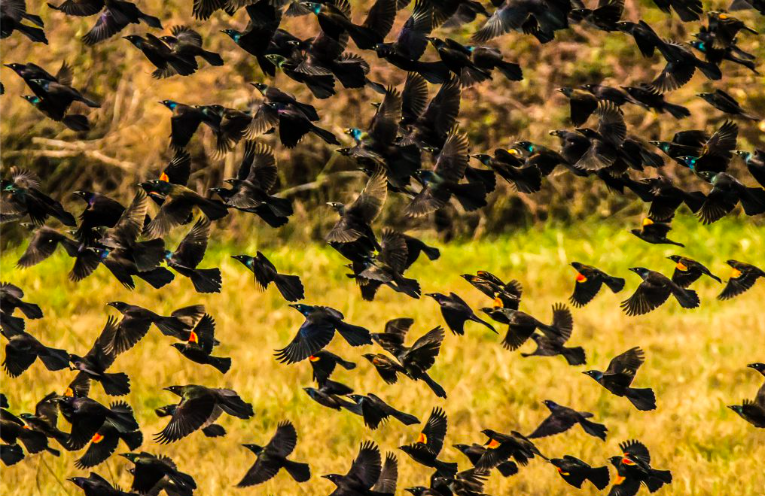
Common Grackle
often migrates with other blackbirds, cowbirds, and starlings
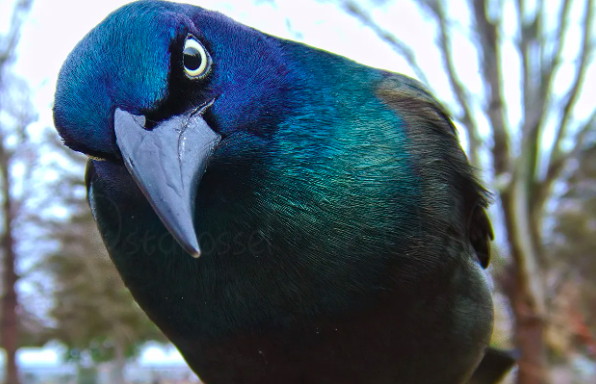
Common Grackle
nuisance species in some farming areas
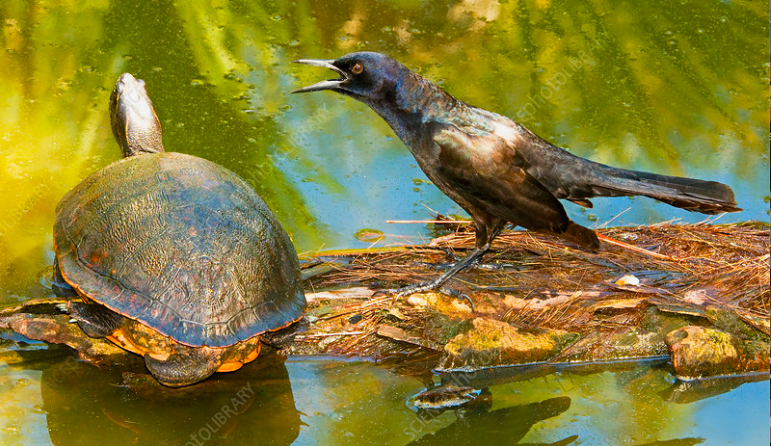
Common Grackle
will follow plows to catch invertebrates and mice
steal worms from robins
pick leeches off turtles
wade in water to catch fish
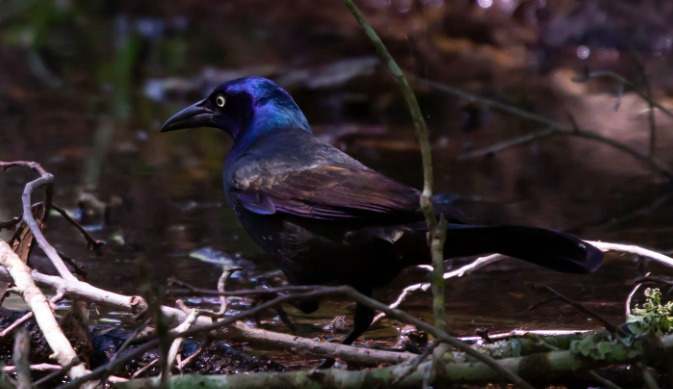
Common Grackle
let ants crawl over them to get the formic acid from their stings to get rid of parasites
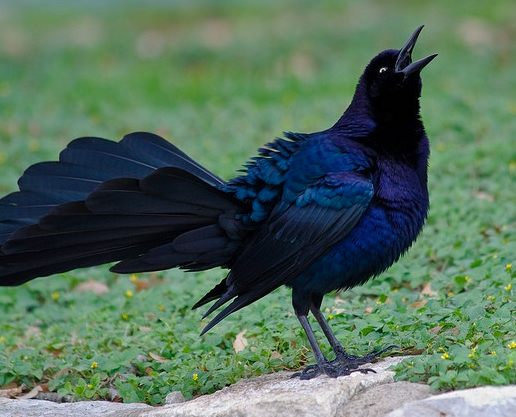
Common Grackle
when courting males fluff up, fly with their tail in a V-shape, and give a short scraping song
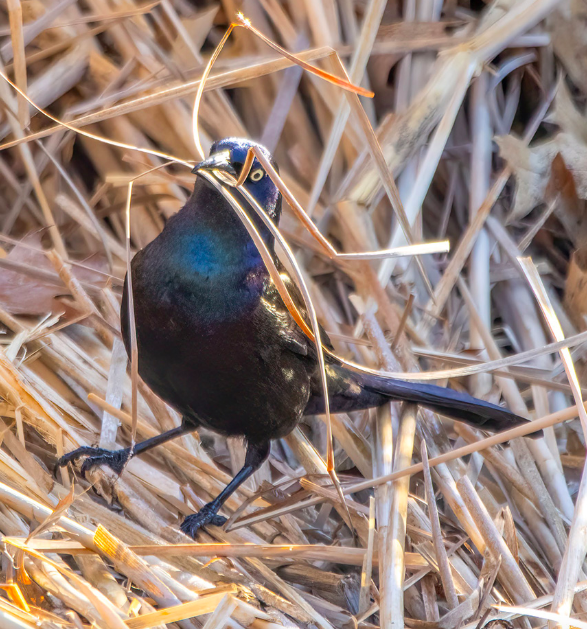
Common Grackle
female build the nest and choose the nest site
males help make repairs
rarely nest in anything other than trees; prefer conifers
female incubate
both parents feed their nestlings, mostly insects
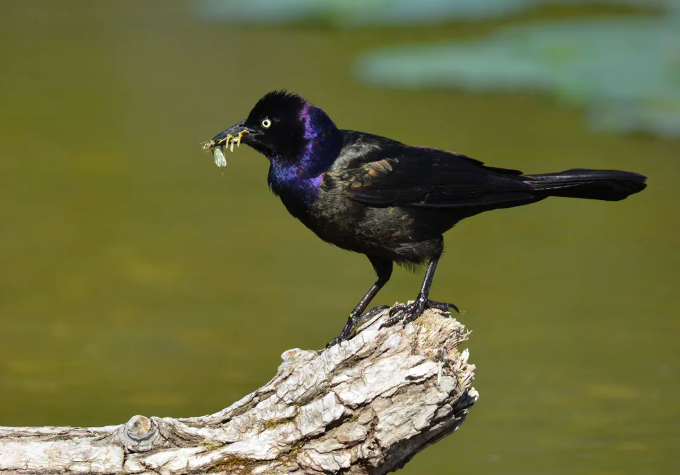
Common Grackle
nuisance but eat pesky insects
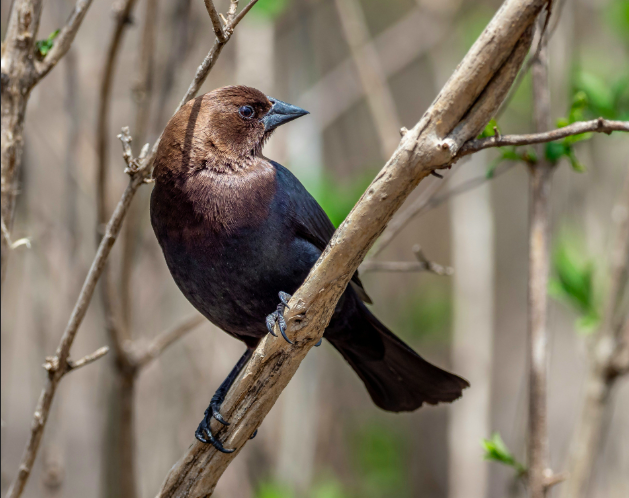
Brown-headed Cowbird
interspecific brood parasite
focus on nests near forest edges
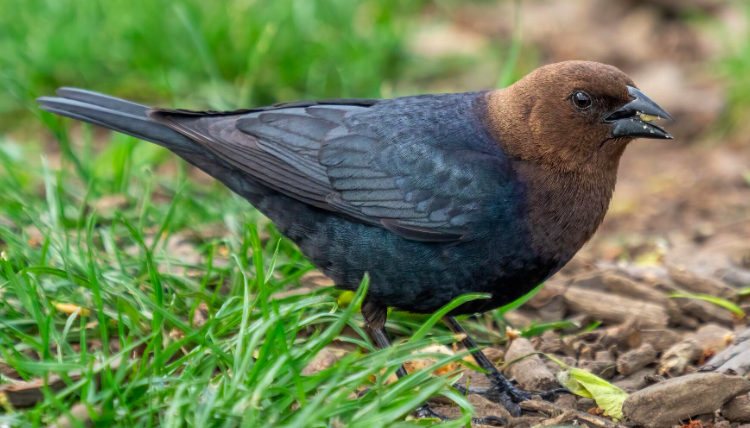
Brown-headed Cowbird
forest fragmentation has benefited this species brood success
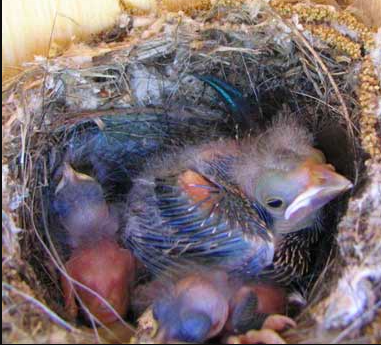
Brown-headed Cowbird
never make their own nests
lay one egg in a hosts nest that they raise as their own because they can’t tell the difference between their own babies and this one
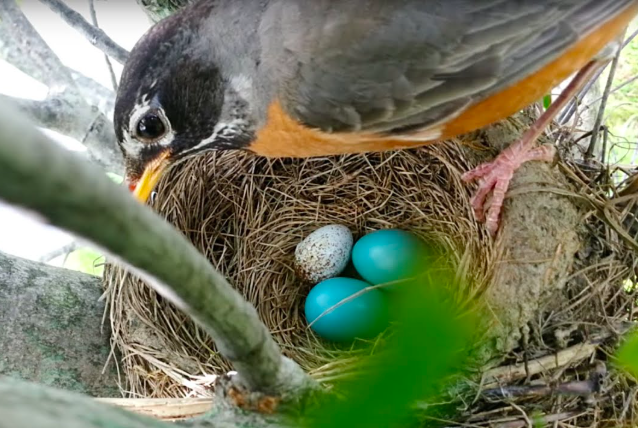
Brown-headed Cowbird
females put all their energy into egg-laying and lay up to three dozen eggs every summer